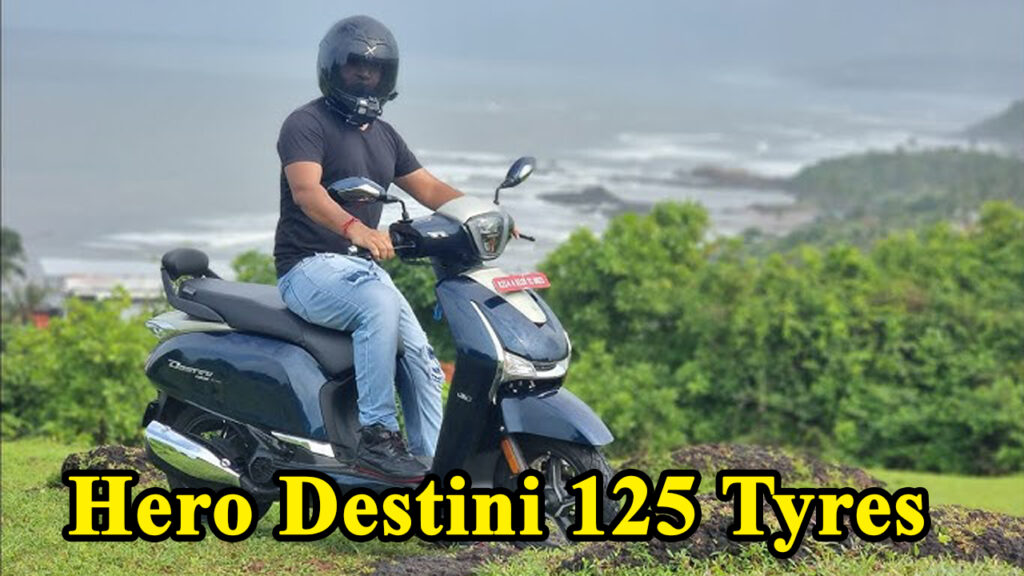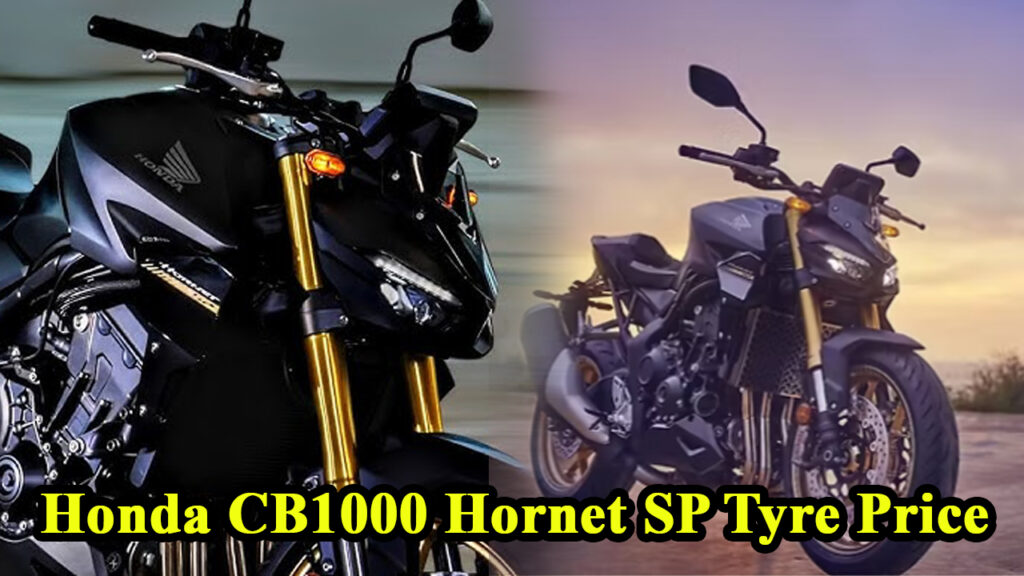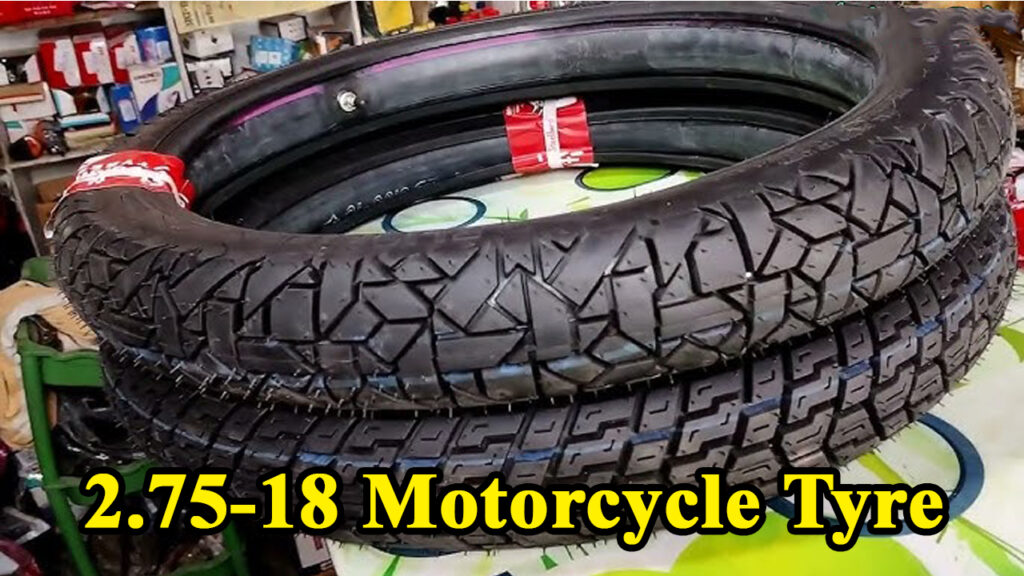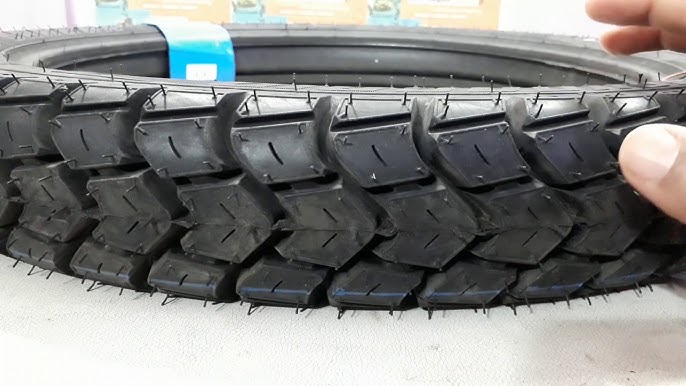Ever thought about the unsung heroes of your daily commute? No, not your perfectly brewed chai or that shortcut through the bustling market, but those two unassuming circles of rubber that connect you to the road: your scooter tyres. For us Hero Destini 125 owners, whether we’re zipping through the crowded streets of Mumbai, tackling unexpected potholes in Bengaluru, or cruising along a scenic route in Kerala, the right set of tyres isn’t just about moving; it’s about safety, comfort, and squeezing every bit of joy from our ride.
The Hero Destini 125, a popular choice for its blend of practicality, comfort, and family-friendly appeal, deserves tyres that complement its nature. This isn’t just a generic guide; it’s a deep dive into the world of Destini 125 tyres, designed to make you an expert, ensuring your ride is always smooth, secure, and ready for whatever Indian roads throw at it.
Understanding Your Destini 125’s Footwear: The Basics
Before we talk about upgrades and choices, let’s get the fundamentals right. Knowing your scooter’s exact tyre specifications is the first step towards an informed decision.
Kawasaki Versys X-300 Tyres Price: Your Ultimate Price & Performance Guide (India)
The Hero Destini 125 typically comes equipped with tubeless tyres, offering an added layer of safety and convenience compared to older tube-type setups. The standard sizes are:
- Front Tyre Size: 90/90-12 (Tubeless)
- Rear Tyre Size: 100/80-12 (Tubeless)
Now, what do these numbers mean?
- 90/90 or 100/80: The first number (90 or 100) indicates the tyre width in millimeters. The second number (90 or 80) is the aspect ratio, representing the sidewall height as a percentage of the width. So, a 90/90 tyre has a sidewall height that is 90% of its 90mm width.
- -12: This signifies the rim diameter in inches, meaning your Destini 125 uses 12-inch wheels.
- Tubeless: This is a game-changer. Tubeless tyres reduce the risk of sudden deflation in case of a puncture, allowing you to often ride to a nearby tyre repair shop instead of being stranded.
The Golden Rule: Tyre Pressure!
Often overlooked, correct tyre pressure is paramount. It impacts everything from safety to fuel efficiency. For your Hero Destini 125, the recommended tyre pressures are:
- Front Tyre: 22 PSI (for solo rider or with pillion)
- Rear Tyre (Solo Rider): 29 PSI
- Rear Tyre (Rider with Pillion): 36 PSI
My own experience tells me that maintaining these pressures is crucial. I once ignored a slightly deflated front tyre on my old scooter, and the steering felt sluggish, almost “heavy.” When I finally topped it up, the difference was immediate – nimble handling and a much more confident ride, especially when weaving through Bangalore’s evening traffic. Make it a habit to check your tyre pressure at least once a week, ideally when the tyres are “cold” (before you’ve ridden much).
Why Your Tyres Are More Than Just Rubber Rings
Think of your tyres as the only point of contact between your 115 kg (approx.) Destini 125 and the road. This seemingly simple component plays a multifaceted role in your riding experience:
- Safety First: This cannot be stressed enough. Good tyres provide the necessary grip for effective braking and confident cornering, especially during sudden downpours, which are a common occurrence across India, from Delhi’s intense monsoon showers to Kerala’s constant humidity. Worn-out tyres significantly increase your stopping distance and the risk of skidding.
- Performance: Proper tyres ensure stable handling, smooth acceleration, and overall control. They absorb road imperfections, contributing to a stable and predictable ride.
- Comfort: Ever ridden a scooter with rock-hard or completely worn tyres? It’s jarring! Quality tyres with adequate air pressure cushion your ride, making even long journeys more enjoyable, especially on our sometimes less-than-perfect roads.
- Fuel Efficiency: Underinflated tyres create more rolling resistance, forcing your engine to work harder and consume more fuel. Maintaining correct pressure can noticeably improve your Destini 125’s mileage.
- Longevity: A quality tyre, properly maintained, will simply last longer, saving you money and hassle in the long run.
Decoding Tyre Technology: What to Look For
Tyres might look simple, but they’re a marvel of engineering. For a scooter like the Destini 125, you’ll primarily encounter bias-ply construction. While radial tyres are common for bikes and cars, bias-ply designs are well-suited for scooters, offering good stability and durability for their intended use.
What truly differentiates tyres are their tread patterns and rubber compounds:
- Tread Patterns: These are the grooves and blocks on the tyre surface.
- Ribbed patterns (straight grooves) are great for straight-line stability and water dispersion.
- Lug patterns (chunky blocks) offer excellent traction, especially off-road or on loose surfaces.
- Most scooter tyres, like those for the Destini 125, feature combination patterns, balancing grip, stability, and water channeling. Look for patterns with prominent grooves that effectively displace water, a crucial feature for monsoon riding.
- Rubber Compound: This dictates the tyre’s grip and longevity.
- Softer compounds offer superior grip, especially in wet or cold conditions, but wear out faster.
- Harder compounds provide excellent longevity and better fuel efficiency, though with a slight trade-off in ultimate grip.
- For a daily commuter like the Destini 125, a balanced compound that offers both decent grip and good life is usually ideal.
Top Aftermarket Tyre Brands for Your Hero Destini 125
When it’s time to replace your tyres, the Indian market offers a plethora of choices. Here are some of the most trusted and popular brands, along with their key offerings for your Destini 125:
-
MRF: A household name in India, MRF tyres are known for their durability and value.
- MRF Zapper (Scooter/FG): A very popular choice, offering a good balance of grip and longevity. You’ll find these in the 90/90-12 and 100/80-12 sizes. A front MRF Zapper FG (90/90-12) might cost around ₹1,300 – ₹1,500, while a rear (100/80-12) could be ₹1,600 – ₹1,900.
- MRF Nylogrip: Often chosen for its hard-wearing compound, offering excellent tyre life, ideal for those who prioritize longevity.
- My take: You can’t go wrong with MRF for everyday commuting. They are reliable workhorses.
-
CEAT: Another strong contender, CEAT offers tyres known for their robust build and performance in varied conditions.
- CEAT Milaze (Scooter): A common OEM fitment on many scooters, loved for its long life and economical pricing. A 90/90-12 Milaze could be around ₹1,200 – ₹1,400.
- CEAT Gripp (Scooter): Designed with better water channeling for superior wet grip, making it an excellent choice for monsoon-prone regions. Expect to pay slightly more for the Gripp, perhaps ₹1,400 – ₹1,700 for a 12-inch scooter tyre.
- My take: If you live in an area with heavy rainfall, a CEAT Gripp is a sensible upgrade for enhanced safety.
-
Apollo: Gaining significant traction, Apollo offers quality tyres with a focus on grip and stability.
- Apollo Actigrip: Known for its good grip levels and stable handling, suitable for diverse road conditions.
-
Michelin: A premium international brand, Michelin tyres are celebrated for their exceptional grip, comfort, and advanced technology.
- Michelin City Pro / City Extra: While often a bit pricier, these tyres offer unparalleled wet grip, superior comfort, and good longevity. Many riders swear by their performance, especially in challenging city conditions. A Michelin City Pro for your Destini 125 might range from ₹1,400 to ₹2,000+ depending on the specific size and model.
KTM RC 200 Tyre Price India: Get the Best Value for Your Ride
- My take: If your budget allows, a Michelin is a fantastic investment in safety and riding pleasure. It’s like upgrading from standard shoes to high-performance trainers!
- Michelin City Pro / City Extra: While often a bit pricier, these tyres offer unparalleled wet grip, superior comfort, and good longevity. Many riders swear by their performance, especially in challenging city conditions. A Michelin City Pro for your Destini 125 might range from ₹1,400 to ₹2,000+ depending on the specific size and model.
-
TVS Eurogrip: A strong Indian brand offering a good balance of performance and affordability.
- TVS Eurogrip Remora / Jumbo GT: These offer decent all-round performance, with good grip and durability, at a competitive price point, typically ranging from ₹1,000 to ₹1,800 for a 12-inch scooter tyre.
-
Reise Moto: A relatively newer entrant, Reise has quickly made a name for itself with well-engineered tyres.
- Reise TripR / TwistR: These tyres have received positive reviews for their balanced performance, offering decent grip and ride quality, often at an attractive price.
Value (Price) Consideration: Generally, a good quality tubeless tyre for your Hero Destini 125 will cost you anywhere between ₹1,000 to ₹2,000 per tyre in India, depending on the brand, model, and specific features. Premium options like Michelin might lean towards the higher end of this spectrum.
Choosing the Right Tyre for Your Riding Style: A Case Study
The “best” tyre isn’t universal; it depends on how and where you ride.
-
The City Commuter (e.g., Daily rides in Delhi NCR): If your Destini 125 is primarily used for navigating congested urban roads, school runs, and market trips, prioritize tyres that offer excellent wet grip (think unexpected showers!) and decent longevity. A CEAT Gripp or an MRF Zapper would be excellent, budget-friendly choices. If you want to splurge for maximum safety, the Michelin City Pro is unmatched.
- Case Study: My neighbour, a school teacher in Noida, uses his Destini 125 daily. He opted for CEAT Gripp tyres after a close call during a monsoon downpour. “The confidence it gives you on slick roads is worth every rupee,” he told me, “especially when you’re rushing to get to work.”
-
The Occasional Highway Cruiser (e.g., Weekend trips from Chennai to Pondicherry): While not a highway tourer, the Destini 125 is capable of occasional longer rides. For such use, look for tyres that offer good stability at slightly higher speeds and enhanced comfort over longer distances. The MRF Zapper or Apollo Actigrip would fit the bill, providing a stable and comfortable ride.
-
Riding with a Pillion Frequently: If you often carry a pillion, especially on the rear seat, ensuring your rear tyre is robust and always inflated to the higher recommended pressure (36 PSI) is critical. Look for tyres known for their load-carrying capacity and stability.
Ultimately, your choice is a balance between grip, longevity, comfort, and price.
Nurturing Your Tyres: Essential Maintenance Tips
Even the best tyres won’t perform optimally or last long without proper care.
- Check Pressure Regularly: As mentioned, this is number one. At least once a week, or before any significant ride. Underinflation is the silent killer of tyres.
- Inspect Tread Depth: The grooves on your tyre are crucial for channeling water and providing grip. Most tyres have “Tread Wear Indicators” (TWIs) – small bars within the main grooves. If the tread surface is flush with these indicators, it’s time for new tyres. In India, while specific legal limits might vary, a general guideline is to replace tyres when the tread depth falls below 1.6 mm. Driving with worn treads is extremely dangerous, especially in wet conditions, significantly increasing the risk of hydroplaning.
- Visual Inspection for Damage: Routinely check for cuts, cracks, bulges, or embedded objects (like nails or sharp stones). Sidewall damage is particularly concerning and often necessitates tyre replacement.
- Avoid Overloading: The Destini 125 has a weight limit. Exceeding it puts undue stress on your tyres, leading to premature wear and potential failure.
- Smooth Riding Habits: Aggressive acceleration, hard braking, and sharp cornering all contribute to faster tyre wear. Smooth inputs extend tyre life.
- Puncture Repairs: While tubeless tyres are great for slow punctures, get them repaired professionally. Improper repairs can compromise tyre integrity. If you have too many punctures on a tyre, it’s safer to replace it.
- Tyre Age: Even if a tyre looks good, rubber compounds degrade over time. Most manufacturers recommend replacing tyres after 5-6 years, regardless of tread wear. Look for a four-digit DOT code on the tyre sidewall (e.g., “3023” means the 30th week of 2023).
The Human Element: My Tyre Story
My own Destini 125, affectionately nicknamed “Guddu” (a common endearment in North India), has seen its share of adventures. I remember once, during a particularly heavy monsoon in Delhi, I was riding with the original equipment tyres. While they were decent, I felt a noticeable slip on a waterlogged patch near Dhaula Kuan. It was unnerving. That incident prompted me to research and eventually upgrade to a pair of Michelin City Pro tyres. The difference was night and day. The scooter felt glued to the road, even through standing water, and braking confidence soared. It wasn’t just a technical upgrade; it was a psychological one, giving me immense peace of mind, especially when my elderly mother rides pillion. That investment, though seemingly small in the grand scheme of the scooter’s cost, significantly enhanced its safety and my overall riding enjoyment.
Conclusion: Your Ride Deserves the Best Footing
Your Hero Destini 125 is a reliable companion, navigating the diverse tapestry of Indian roads. But its true potential for safety, comfort, and performance is unlocked by the tyres it rides on. Don’t view them as a mere accessory; they are a critical safety component and a key determinant of your riding experience.
By understanding the specifications, recognizing the importance of proper maintenance, and choosing the right aftermarket options based on your riding style and priorities, you’re not just buying rubber – you’re investing in peace of mind, a smoother ride, and the continued joy of hitting the open road (or navigating the urban jungle!) on your beloved Destini 125. Ride safe, ride smart!
Frequently Asked Questions (FAQ) about Hero Destini 125 Tyres
Q1: What is the standard tyre size for the Hero Destini 125? A1: The Hero Destini 125 typically comes with a 90/90-12 tubeless tyre for the front and a 100/80-12 tubeless tyre for the rear.
Q2: How often should I check my Destini 125 tyre pressure? A2: It’s highly recommended to check your tyre pressure at least once a week, or before every significant ride, when the tyres are cold.
Q3: Which tyre brand is best for wet roads for Destini 125? A3: For superior wet grip, brands like Michelin (e.g., City Pro/City Extra) and CEAT (e.g., Gripp) are highly recommended due to their advanced tread patterns designed for efficient water dispersion.
Q4: How much does a new tyre for Hero Destini 125 cost? A4: A new tubeless tyre for your Hero Destini 125 generally ranges from ₹1,000 to ₹2,000 per tyre in India, depending on the brand and model. Premium options will be at the higher end of this range.
Q5: Can I use a tube-type tyre on my tubeless rim? A5: While technically possible, it is not recommended to fit a tube-type tyre on a rim designed for tubeless tyres. Tubeless rims have specific beads that create an airtight seal with a tubeless tyre. Using a tube-type tyre with a tube on such a rim can lead to compromised sealing, poor handling, and safety issues. Always stick to tubeless tyres for tubeless rims.




